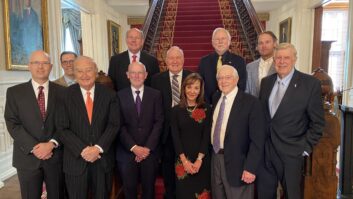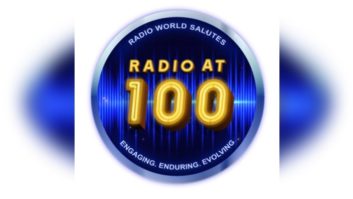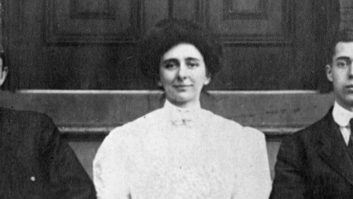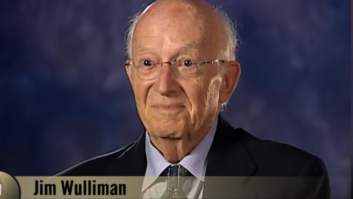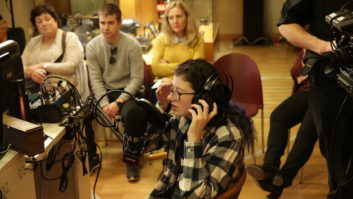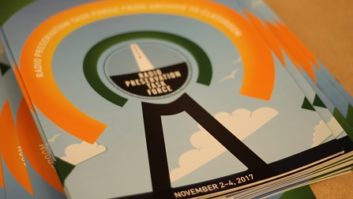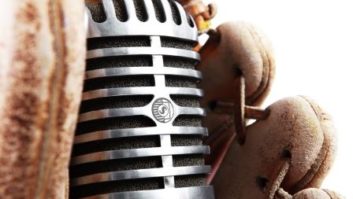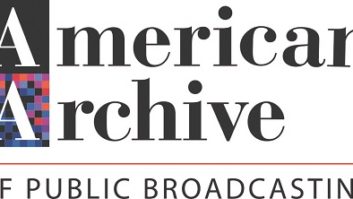Vintage Radio and Communications Organization in Connecticut Seeks Support to Build the Dream
This article is one in a series of occasional stories about museums of broadcasting. It first appeared in Antique Radio Classified. The author is the secretary for the museum.
The Vintage Radio and Communications Museum of Connecticut has a new, permanent home after drifting around Connecticut for the past 12 years.
In December, the museum completed the purchase of a vacant industrial property in downtown Windsor, about 10 minutes north of Hartford. The 85,000-square-foot mill building is on the National Register of Historic Places and will be converted into space for the museum and additional professional business space.
(click thumbnail)This older brick section of the building will be the new home of the museum
“This is the realization of a dream 12 years in the making. After many months of hard work, we have been able to secure a deal that gives our museum permanency and gives us the space to turn our museum into a major national tourist attraction,” said John Ellsworth, director of the museum.
“The finished museum will be an all-encompassing communications museum that will trace the development of electronic communications from Morse Code in 1840 to the computers of today. There isn’t a museum like it anywhere in this part of the country, and it will serve as a great educational center for children in the area.”
The building has an interesting history.
It was constructed in various stages from 1870 until 1920. It has housed such industries as a gun manufacturer, an electric generator maker, tobacco warehouses and nuclear research facilities. Most recently it was used by Combustion Engineering as warehouse space. The property has been largely vacant for the past two years and was identified by the community as being in one of its key revitalization zones.
The museum will occupy some 30,000 square feet; the remainder of the space will be leased to businesses that want to restore the building in exchange for extreme submarket leases. Over time, the rental income will become an endowment for the museum, funding museum development, staffing and collection upkeep.
But until that time, the organization is scrambling to raise capital to get the museum going.
Needs
“We know that the building of our museum is going to be a major undertaking, but the museum volunteers are ready. We are hoping to recruit more interested parties to help us make this a reality. We need donations of cash, materials, expertise and time,” Ellsworth said.
“Our biggest challenge right now is heating and air conditioning, as there is none in the building. We also need to repave the parking lot, convert the building’s freight elevator into a public elevator, replace all the windows and hire a permanent full-time director. The estimated cost to fully restore the building tops $1 million.”
The museum is approaching foundations and state and federal sources for funding to restore the building. However, the majority of the money probably will have to come from private individuals who want to see the museum succeed.
“According to the latest philanthropic figures, more than 80 percent of all fundraising comes from individual donations, rather than from corporations or foundations,” Ellsworth said. “It’s going to be a major challenge, but if we can find people who are willing to make donations, even on the scale of $20 each, it will all add up. We hope that as people hear about our project, they will open their hearts and wallets and make a tax-deductible donation to get this project off the ground.”
The museum also is seeking material donations of plumbing supplies, electrical work and HVAC equipment. Ellsworth says he hopes some company may be replacing an older HVAC unit that is functional and, instead of throwing it away, will donate the equipment in exchange for a tax write-off.
“We are currently also expanding our board of directors, and developing community outreach programs,” said Ellsworth. “We have lots of great ideas for things to turn this museum into a world-class facility.”
Plans
“When we founded this museum 12 years ago, we never envisioned it would take on a life of its own, but it has,” he said. “Through four moves, the museum has grown by leaps and bounds, and now we will have our first-ever permanent home to develop our displays.
“Collectors from around the country who are looking for safe and permanent housing for their collections will now be able to share their items with the world. Schools and universities from around the area will have a treasure trove of historical communications data at their fingertips. I am extremely excited about the possibilities that this new location offers us, and I hope that enthusiasm will be contagious.”
Among the anticipated displays at the museum will be a community FM radio station, serving the Windsor area; an amphitheatre that will double a community meeting room; a tour of audio communications history from early radio development through recording equipment and telephone; a tour of visual communications history starting with television and moving up through motion pictures and modern computers; a look behind the industrial technology that enabled the development of modern communications; extensive hands-on displays; a historical recordings archive with listening stations; a regional broadcasters’ hall of fame; and a complete communications reference library unmatched anywhere in the world.
If you are interesting in making a tax-deductible donation to help the museum restore its new home, mail a check to The Vintage Radio and Communications Museum of Connecticut, 33 Mechanic Street, Windsor, CT 06095, or visit www.nationalcommunicationsmuseum.org.
Museum Director John Ellsworth is reachable at (860) 673-0518 or via e-mail to [email protected].
At this writing the museum awaits an expected certificate of occupancy from the town.
This story is copyright 2002 by John V. Terrey, reprinted with permission of Antique Radio Classified, where it was published in May 2002. For a free sample issue, write to A.R.C., P.O. Box 2, Carlisle, MA 01741 or send e-mail to [email protected]






